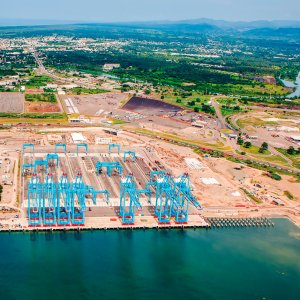Fibras Developing Across All Sectors

STORY INLINE POST
Q: What impact is the macroeconomic environment having on the use of Fibras in the development market?
A: There are many new infrastructure projects in Mexico, such as the Mexico-Toluca Interurban train and others related to the oil and gas sector, that will be put on hold due to economic constraints but this will not stop the real estate sector from growing. This segment is independent and is not directly affected by downturns in other industries. Mexico’s Fibras will be affected more by volatility in global financial markets than from direct infrastructure development. The US dollar-peso exchange rate, for example, has had a positive impact on our company since about 30 percent of our revenue is in dollars. For every dollar of debt we have, we receive US$2.30 of revenue, which provides us with a natural hedge. For others, fluctuations in the exchange rate have delayed investments and investors have grown more cautious. Although peso weakness has boosted rents by 10-12 percent we strive to maintain the healthy dollar-peso relationship of the original lease. Difficult times also are useful for new acquisitions because it is harder for owners to sell their assets and investors have enough liquidity to take advantage of these opportunities.
Q: How does Fibra Uno ensure high occupancy rates?
A: We recently acquired the Alaska Portfolio, which has six iconic office buildings in key Mexico City locations. These properties have a 95 percent occupancy rate, which is consistent with the rest of our portfolio, and significantly increase Fibra Uno’s footprint in the Class A office market. The value of the portfolio also has increased because 90 percent of the rent revenues from these properties are dollar-denominated. To maintain high occupancy levels, Fibra Uno has always kept rent prices competitive, always below the market average, and has built lasting relationships with tenants across all segments. We also have the best locations and these factors ensure that our properties are the last ones to be vacated during difficult times and the first ones to fill up during upturns. We can keep our prices low because we have a vertically integrated platform through the construction, marketing and operation phases, which enables Fibra Uno to achieve synergies and economies of scale that translate to discounts that are reflected in our rents.
Q: How is Fibra Uno participating in the development of educational and health infrastructure?
A: The government has created National Education Infrastructure Certificates, which will be extremely useful tools to boost the growth of educational infrastructure, but Fibra Uno does not use them. We prefer to conduct sale- and-lease-back transactions with educational institutions. In these transactions, institutions sell us the real estate asset and we then lease it back to them for long periods of time. This gives the schools immediate liquidity to expand their campuses and increase enrolment levels. We will carry out a similar transaction with a hospital that we are acquiring because of its location. A hospital needs to be in the middle of urban areas. Those locations are becoming scarce and will become more valuable over time. Although we are keeping our target on real estate, we believe these transactions are an excellent way to contribute to the development of the educational and health sectors.
Q: What interest does Fibra Uno have in Special Economic Zones (ZEEs)?
A: We are looking to invest in ZEEs in the next couple of years because our target is to increase our industrial segment. Fibra Uno’s breakdown was designed to be 40 percent industrial, 40 percent retail and 20 percent offices. Our current breakdown is 55 percent retail, 25 percent industrial and 20 percent offices so we need to rebalance our portfolio to its original levels. There is an industrial boom in the Bajio region due to heavy investments from the automotive industry and the return of manufacturing companies that had previously migrated to China. Industrial real estate in Mexico is targeted to international companies, which are the Tier II and Tier III suppliers of the automotive industry.
Q: What makes Fibra Uno unique and what advantages does the company provide investors?
A: I believe Fibra Uno is unique in size and scale and it provides liquidity to investors. Over 6 million of our shares are traded per day on average. An investor wanting to enter the real estate market in Mexico finds it easier to purchase Fibra Uno’s shares compared to any other Fibra. We also provide diversification and a prudent financing strategy, which is another key competitive advantage. The company has broad access to capital markets, which is a feature few Fibras have and ensures continuous growth. Our long-lasting relationships with tenants and other key suppliers, the size of our portfolio and the strategic locations of our properties give us an unparalleled competitive advantage that allows us to provide the best real estate solutions to all our tenants.
Q: What regulatory and other challenges are the Mexican Association of Real Estate Fibras (AMEFI) and its members facing?
A: The real estate market is growing quickly and becoming more sophisticated. Being relatively new to the stock market, the main challenges we face are related to share buyback programs and the inclusion of Fibras in the main index of the Mexican Stock Exchange (BMV). There will be other challenges that AMEFI will face in the mid and long term. We have to bear in mind that this asset class is very young. It took 50 years for the REIT industry in the US to reach its current standing and we want to shorten that time significantly for Mexico. AMEFI has established close working relationships with CNBV, Banxico, BMV and the Mexican Tax Authority (SAT). Together, we have been developing regulations that will allow our asset class to thrive in the next couple of years and to ensure a fair and transparent market. It is also a priority for us to negotiate proper regulations and standards that ensure the future of the Fibra market and the asset class.
Q: How has the lack of adequate regulations and standards impacted Fibra Uno’s operations?
A: Fibra Uno once had to issue $US2.5 billion on a single equity offering, which created a negative carry for investors since more than 800 million shares were issued and the proceeds were placed in a bank account earning interest rates far below what they could earn if invested in real estate. Equity offerings are lengthy processes that require due diligence and enormous amounts of paperwork with government agencies. Fibra Uno had to issue such a large amount because it wanted to raise cash and there were no other options for conducting equity offerings in short periods of time. Since Fibras have to distribute at least 95 percent of their taxable income, there is virtually no room for organic growth. Fibra Uno is planning a debt issuance to raise capital but Fibras cannot leverage beyond 50 percent of the value of their assets due to regulatory limits. We have a prudent leveraging strategy with low self-imposed limits. Fibra Uno operates under 35 percent of loan-to-value leverage so we have additional room to leverage our balance sheet further but that will depend on volatility and the global financial landscape.























